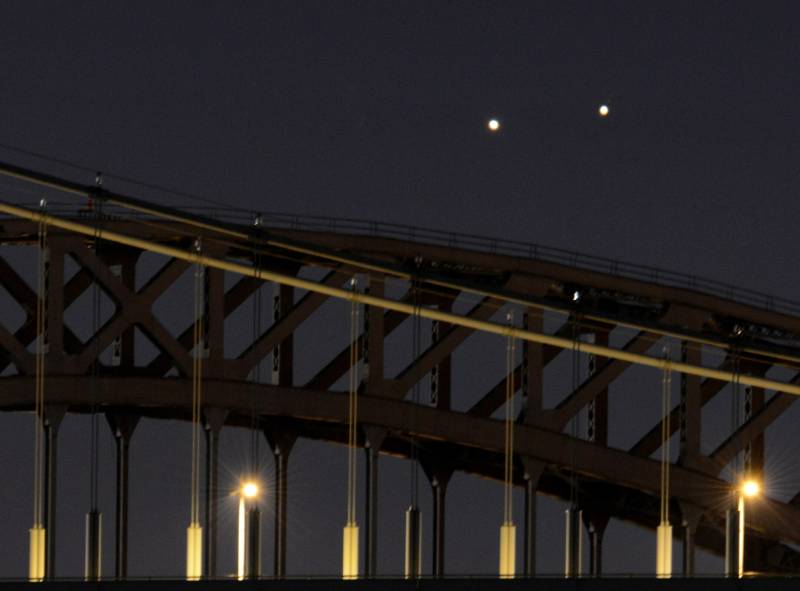Last night, after dinner, I went outside to take care of our chickens. And I literally gasped. Up in the sky were two dazzlingly bright objects close to each other. It was a beautiful, extraordinary sight. I felt a tingle of joy and a moment of calm. I felt what psychologists call awe – an emotion that can relieve stress and calm nerves. Who doesn’t need that?
And tonight is going to be an even better night to experience this awe. So, after sunset I’m taking my entire family outside to feel this warm and lovely feeling of awe. Because these two bright objects – the planets Venus and Jupiter – will be even closer.
“They’ve been coming in closer and closer for a little nighttime kiss,” says Jackie Faherty, who’s an astronomer at the American Museum of Natural History.
Of course in space the planets aren’t really going to smooch. “They are actually 400 million miles apart,” Faherty says. That’s more than four times the distance than we are from the sun.
What is happening, is a Venus-Jupiter “conjunction” — that’s what astronomers call it. “Venus is passing Jupiter as they both orbit the sun,” Faherty explains. “The inner planets move a lot faster than the outer planets. So you get a lot of these like racetrack passes,” she says.

9(MDAxOTAwOTE4MDEyMTkxMDAzNjczZDljZA004))
